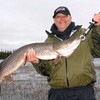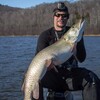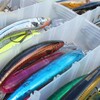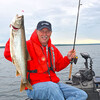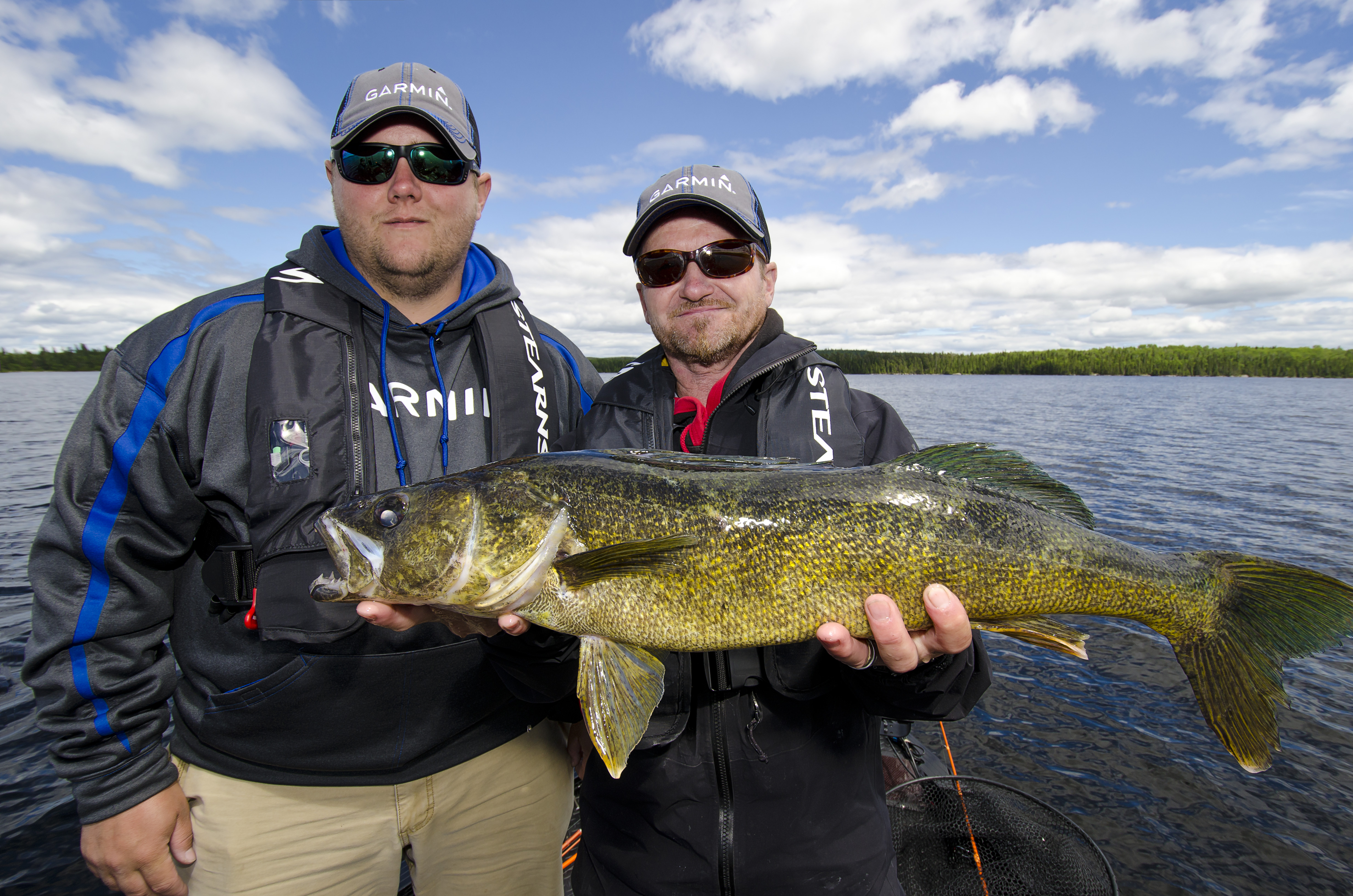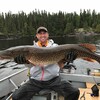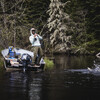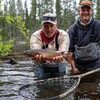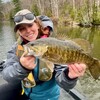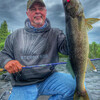
Learn to Drop Shot Walleye
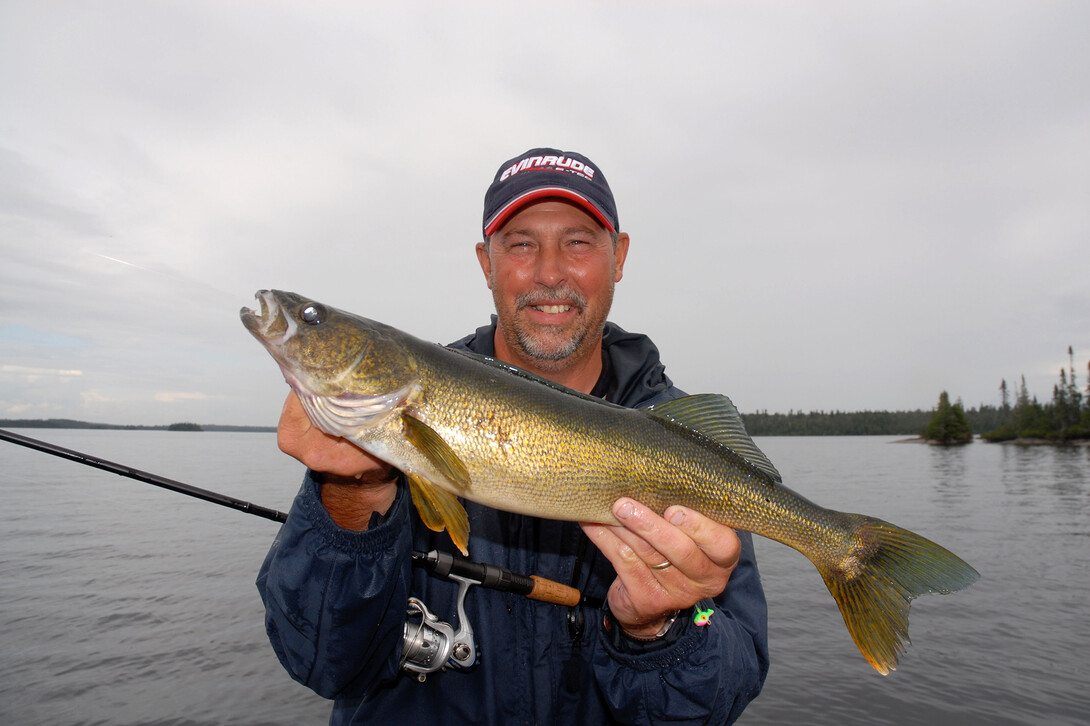
Drop shot rigging is a wildly popular bass fishing presentation that just happens to work wonders on walleye too! I came upon this realization recently while fishing walleye at Kag Lake a fly-in destination owned by Leuenberger's Air Service out of Nakina, Ontario. My guest for the week was a bass fishing pro, Kendall Ulsh, who helped me better understand how deadly and effective drop-shotting can be.
On this particular trip, fishing was outstanding and it didn't take long for my crew to catch enough walleye on traditional methods to put an episode of Fishing 411 TV in the can. With time on our hands, we started exploring other less orthodox methods of catching walleye and Kendall suggested trying drop shot rigging.

Unfortunately, our group had not come prepared to fish using this or any other bass presentation. Without access to most of the essential elements of a drop shot rig, it required a creative approach to getting rigged up. Being always adaptable, a makeshift version of the drop shot rig was soon spawned.
"Bass anglers set up a drop shot rig typically using a seven-foot medium light action spinning rod and reel set uploaded with fluorocarbon line," says bass pro, Kendall Ulsh. "At the terminal end a lead, iron, or tungsten weight is attached to the line. About 12 to 15 inches above this sinker a "drop shot" specific hook is tied in-line."
"Not attaching the hook to a short leader or dropper, makes the drop shot rig exceptionally sensitive to detecting bites," Ulsh went on to explain. "A thin wire and wide gap hook are essential for this rigging method. Several popular manufacturers make "drop shot" specific hooks."
Drop shotting is a very simple, but highly effective rig that allows the bait to be suspended in the water column right where fish can easily see it.
Our modified version of a drop shot rig consisted of a lead head jig with the hook snipped off for a bottom weight. A No. 2 beak-style hook robbed from a nightcrawler harness, worked well as a "drop shot" hook. Thankfully we had lots of 6- and 8-pound test fluorocarbon lines to work with.

At the Business End
"The bait a bass angler uses on a drop shot rig varies depending on the species of bass being targeted, water clarity, time of year, water temperature, and about 100 other variables," adds Ulsh. "That's good because there are at least 100 different options for soft plastics suitable for fishing on a drop shot rig."
Some of the more popular soft plastics for drop-shotting include flukes, finesse worms, jerk minnows, minnow grubs, tubes, and a wide assortment of action-tail grubs.
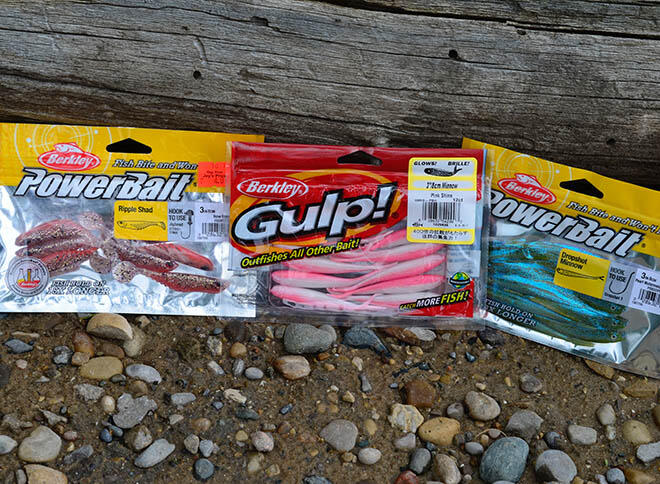
Bait options on this particular trip were somewhat limited. At our disposal were three types of soft plastic baits including some Berkley Gulp Minnows in 3- and 4-inch sizes, a few Berkley Power Bait Ripple Shads, and a small assortment of action tail grub bodies. Also in camp were a lot of very plump nightcrawlers able for the task.
Finding Fish
Finding fish wasn't a problem, but it still remained to be seen if drop-shotting would produce as well as jigging. It was August and most of the walleye in Kag Lake were using mid-lake bottom structure.
Natural lakes across Northwestern Ontario are similar in makeup. Most feature lots of rocky shorelines and countless islands. In the open water basins, lots of submerged islands provide walleye ideal places to feed on minnows and crayfish. The best, submerged islands had sprawling flats on the top with lots of scattered rocks and gravel. Most of the good spots topped off in 20 to 30 feet of water and were literally crawling with walleye from 18 to 24 inches in length.
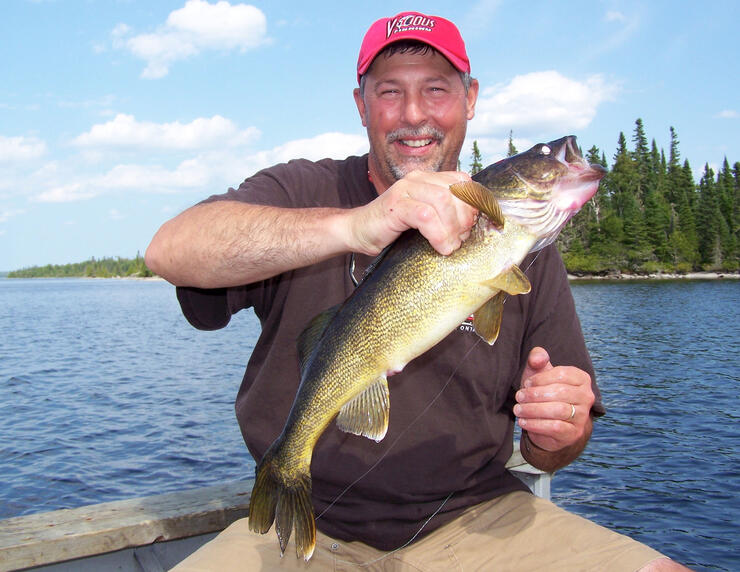
"The vast majority of fly-in lakes across Ontario are poorly mapped or not mapped at all," explains Ulsh. "Because we didn't have the advantage of detailed maps or electronic mapping systems we had no clue where the humps and reefs were located. The only way to find these fish-holding structures was by covering water, being patient, and studying the sonar carefully."
Thankfully, a portable Sonar/GPS unit allowed us to save the location of productive fishing spots once they were located. This made it possible to return to productive spots over and over again.
A Fishing Strategy
The small boats available on a fly-in fishing trip do not allow for the luxury of an electric motor for boat control chores. Back trolling into the wind using a small outboard motor helped keep the boat positioned over the top of prime structures.
By letting out just enough line to keep the sinker ticking along the bottom, drop-shotting positions the bait a little off the bottom and in clear view of nearby fish. By staying as vertical as possible, it was possible to literally spot fish on the sonar, drop down and catch them!
The natural movement of the boat was enough to keep the baits moving. No particular action or movement of the rod was required to trigger strikes. In fact, simply reeling up the slackline and holding the rod still produced the best results.
"Lip hooking the soft plastics produced best," added Ulsh. "Compared to jig fishing, drop shot rigging makes it easier to detect subtle strikes. With jigging, the bait is constantly raising and lowering in the water. If a fish strikes as the lure is dropping, it's very difficult to detect the take."
By comparison, drop-shotting keeps the angler in direct contact with the lure. The most subtle strike is readily telegraphed up the line and easily detected as a bite.
"Snags were relatively rare even when fishing in rock rubble," said Ulsh. "The most snag-free style of drop shot sinkers are pencil weights. Other weight shapes function well in sand or gravel, but not in rock."

Tackle Considerations
A medium/light or light action spinning combination works best with drop-shot rigging. Okuma produces a 6 feet, 10-inch light action spinning rod in the EVx line that's designed with drop shotting in mind. This rod also doubles as an excellent stick for pitching light jigs. The Okuma Trio spinning reel loaded with a 6- or 8-pound test fluorocarbon line is an ideal match for the EVx drop shot rod.
"Fluorocarbon line is a vital part of this subtle presentation," says Ulsh. "Because fluorocarbon has less stretch than monofilament it's a more sensitive medium making it easier to detect strikes. Super braid lines are on the other side of the spectrum and have too little stretch. The lack of stretch allows the fish to detect that something is unnatural and spit out the bait as fast as they inhale it."
Summing It Up
Drop shot rigging is wildly popular among bass anglers who use this presentation to tease bites from heavily pressured bass. For the walleye angler looking at alternatives to jigging or live bait rigging, the drop shot rig has much to offer. When walleye are found in deep water and holding on bottom structure, a trick from the bass angler's handbook is just the ticket.


